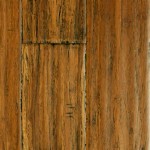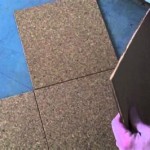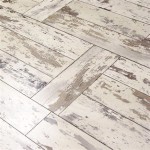Stone Kitchen Flooring Options: A Comprehensive Guide
Stone flooring offers a timeless elegance and durability that is difficult to match with synthetic materials. In the kitchen, where spills, heavy foot traffic, and varying temperatures are commonplace, stone provides a robust and aesthetically pleasing flooring solution. Understanding the diverse range of stone options, their individual characteristics, and the factors to consider when making a selection is crucial for creating a kitchen floor that is both beautiful and functional.
This article examines the most popular stone flooring options suitable for kitchens, exploring their properties, advantages, disadvantages, and installation considerations. The aim is to provide homeowners with the information necessary to make informed decisions regarding their kitchen flooring projects.
Granite: The Epitome of Durability
Granite is a naturally occurring igneous rock, prized for its exceptional hardness and resistance to scratching, staining, and heat. This inherent durability makes granite an excellent choice for kitchens, where it can withstand the rigors of daily use. Granite's density prevents liquids from easily penetrating its surface, contributing to its stain resistance. Additionally, its heat resistance allows for the placement of hot cookware without fear of damage.
The aesthetic versatility of granite is another significant advantage. It is available in a wide range of colors, patterns, and textures, ranging from subtle earth tones to bold, vibrant hues. This variety allows homeowners to select a granite that complements their existing kitchen décor and personal preferences. The variety is created by the mix of minerals that make up the stone. Some examples will be darker with visible flakes of mica while some can be lighter with quartz veins adding visual interest. Polished granite offers a glossy, reflective surface, while honed granite provides a more matte and natural appearance. The choice between these finishes depends on the desired aesthetic and the level of maintenance preferred; polished granite tends to show fewer scratches than honed granite.
However, granite flooring does come with certain drawbacks. The initial cost of granite can be higher than other flooring materials, including some other stone options. The installation process typically requires professional expertise, adding to the overall expense. Granite is also a heavy material, which may necessitate reinforcement of the subfloor in some cases. While granite is generally stain-resistant, it is porous to some degree and requires sealing to prevent the absorption of liquids and potential staining. Regular sealing, typically once or twice a year, is essential to maintain its appearance and longevity. Finally, granite's hardness can make it unforgiving underfoot. It is not the most comfortable surface to stand on for extended periods and can be tiring for individuals with joint problems.
Granite can be purchased in tiles of various sizes and in slab format. Tiles are generally easier to install and less expensive than slabs. Slabs offer a seamless and more luxurious look, but their installation requires specialized equipment and skills.
Marble: Luxurious Elegance with Considerations
Marble is a metamorphic rock known for its distinctive veining and elegant appearance. It has been used in architecture and design for centuries, lending a sense of luxury and sophistication to any space. In the kitchen, marble flooring can create a stunning visual impact, elevating the overall aesthetic. Marble is available in a range of colors, from classic white and gray to more exotic shades of green, pink, and black.
The primary appeal of marble is its undeniable beauty. Its smooth, polished surface reflects light, creating a bright and airy atmosphere. The unique veining patterns in each slab of marble ensure that no two floors are exactly alike, adding to its exclusivity. Marble also offers a cool surface underfoot, making it a comfortable choice in warmer climates.
However, marble is a relatively soft stone compared to granite and other options, making it more susceptible to scratching and etching. Acids, such as those found in citrus juice, vinegar, and common household cleaners, can react with the calcium carbonate in marble, causing etching and dulling the surface. Its porosity also makes it more prone to staining if spills are not cleaned up promptly. Regular sealing is crucial to protect marble flooring from stains and etching.
Marble flooring requires careful maintenance to preserve its appearance. It should be cleaned regularly with pH-neutral cleaners specifically designed for stone. Avoid abrasive cleaners and scrubbing pads, as these can scratch the surface. Polishing may be required periodically to restore its shine and remove minor scratches. Due to its relative softness, installing marble in high-traffic areas of the kitchen, such as near the stove or sink, may not be the most practical choice. Consider using marble in lower-traffic areas or opting for a honed finish, which is less likely to show scratches than a polished finish.
Like granite, marble can be purchased in tiles and slabs. Slabs offer a more seamless look but require professional installation. Tiles are easier to handle and less expensive, but grout lines will be visible.
Slate: Rustic Charm and Natural Texture
Slate is a fine-grained metamorphic rock derived from shale, known for its distinctive layered appearance and natural cleft texture. It is a durable and water-resistant material, making it suitable for kitchens, particularly those with a rustic or natural aesthetic. Slate is available in a range of colors, including gray, black, green, purple, and brown, offering a variety of design options.
The primary advantages of slate flooring are its durability and slip resistance. Its textured surface provides excellent traction, making it a safer choice than smoother stone options, especially in areas prone to moisture. Slate is also relatively resistant to staining and fading, making it a low-maintenance option. The natural cleft texture of slate adds visual interest and a unique character to the floor.
However, slate is a relatively soft stone compared to granite, and it can be susceptible to scratching and chipping, particularly in high-traffic areas. The layered structure of slate can also make it prone to flaking or delamination over time. To minimize these issues, it is important to select high-quality slate and seal it properly. Sealing helps to protect the slate from moisture and staining, and it can also help to bind the layers together, reducing the risk of flaking.
Slate flooring can be somewhat uneven due to its natural cleft texture. This can make it challenging to clean and may require the use of specialized cleaning products and techniques. Unevenness also creates a texture that some people may not enjoy underfoot. The color variation within slate can be a positive or a negative, depending on the desired aesthetic. Some homeowners appreciate the natural variation, while others prefer a more uniform appearance.
Slate is typically sold in tiles of varying sizes and shapes. The installation process can be more challenging than with other stone options due to the unevenness of the tiles. Professional installation is recommended to ensure a level and durable floor.
Limestone: Warmth and Natural Beauty with Higher Maintenance
Limestone is a sedimentary rock composed primarily of calcium carbonate. It is known for its warm tones and natural beauty, making it a popular choice for kitchens seeking a rustic or Mediterranean aesthetic. Limestone is available in a range of colors, including beige, cream, gray, and tan, and it often features fossils or other natural inclusions that add to its character.
The primary advantage of limestone flooring is its natural beauty and warmth. Its soft, earthy tones create a welcoming and inviting atmosphere. Limestone is also relatively porous, which allows it to absorb and release moisture, helping to regulate humidity levels in the kitchen. The porous nature of limestone makes it a good conductor of heat, making it a good partner for underfloor heating systems.
However, the porosity of limestone also makes it its biggest weakness. It is highly susceptible to staining and etching, especially from acidic substances. Spills should be cleaned up immediately to prevent permanent damage. Regular sealing is essential to protect limestone flooring from stains and etching. Sealing should be done more frequently than with other stone options, typically every few months, depending on the level of traffic and exposure to liquids.
Limestone is a softer stone than granite or slate, making it more prone to scratching and wear. It is not recommended for high-traffic areas or kitchens with pets. Limestone flooring requires regular maintenance to preserve its appearance. It should be cleaned with pH-neutral cleaners specifically designed for stone. Abrasive cleaners and scrubbing pads should be avoided, as these can scratch the surface. Polishing may be required periodically to restore its shine and remove minor scratches.
Limestone is available in tiles and slabs. Tiles are easier to install and less expensive than slabs. Slabs offer a more seamless look but require professional installation. Tumbled limestone tiles offer a more rustic and textured appearance, while honed limestone tiles provide a smoother and more refined look.
Travertine: Distinctive Texture and Earthy Tones
Travertine is a type of limestone formed near mineral springs. It is characterized by its distinctive pitted surface and earthy tones, often ranging from cream to brown. The unique texture of travertine is due to the presence of gas bubbles during its formation.
The primary appeal of travertine flooring lies in its natural beauty and distinctive texture. Its warm, earthy tones create a rustic and inviting atmosphere. The pitted surface provides excellent slip resistance, making it a safe choice for kitchens. Travertine is also relatively durable and can withstand moderate foot traffic.
However, the pitted surface of travertine also presents some challenges. It can be difficult to clean, as dirt and debris can become trapped in the pits. Regular cleaning with a soft brush and pH-neutral cleaner is essential to maintain its appearance. Grout lines can also be difficult to keep clean, especially if they are not properly sealed. Filling the pits in travertine with epoxy or grout can make it easier to clean, but this will also change its appearance.
Travertine is a porous stone and requires sealing to protect it from stains and moisture. Sealing should be done regularly, typically every year or two, depending on the level of traffic and exposure to liquids. Travertine is also susceptible to etching from acidic substances, so spills should be cleaned up immediately.
Travertine is available in tiles and pavers of various sizes and shapes. The installation process is similar to that of other stone tiles. The tiles can be installed with or without grout, depending on the desired look. Honed travertine offers a smoother surface than tumbled travertine, but it is also more susceptible to scratches.

Our Tips For Selecting Stone Kitchen Flooring Your Project Natural Consulting

Best Stone Floors For Kitchens Blog Quorn

Natural Stone Flooring Tiles Модернизм Кухня Другое от эксперта Resido Houzz Россия

35 Stone Flooring Ideas With Pros And Cons Digsdigs

Jacobean Stamford Stone At Home

Natural Stone Flooring Design Ideas S Remodel And Decor Modern Kitchen Floor Eclectic

Our Tips For Selecting Stone Kitchen Flooring Your Project Natural Consulting

Natural Stone Tile Vs Porcelain Lookalike We Ll Help Decide

Captivating The Farmhouse Stone Kitchen Floor Lake House Flooring

15 Stone Flooring Ideas To Try For Your Floor Plan Decoist
Related Posts








